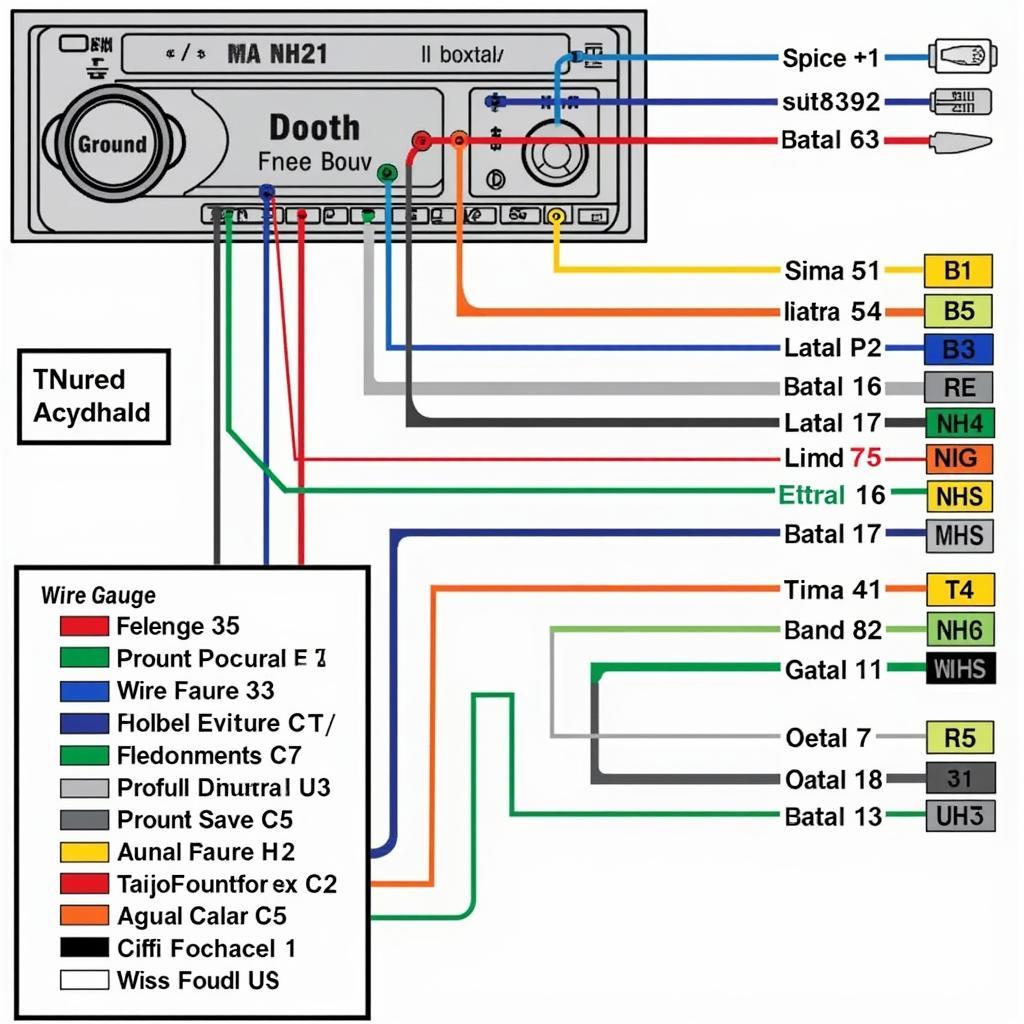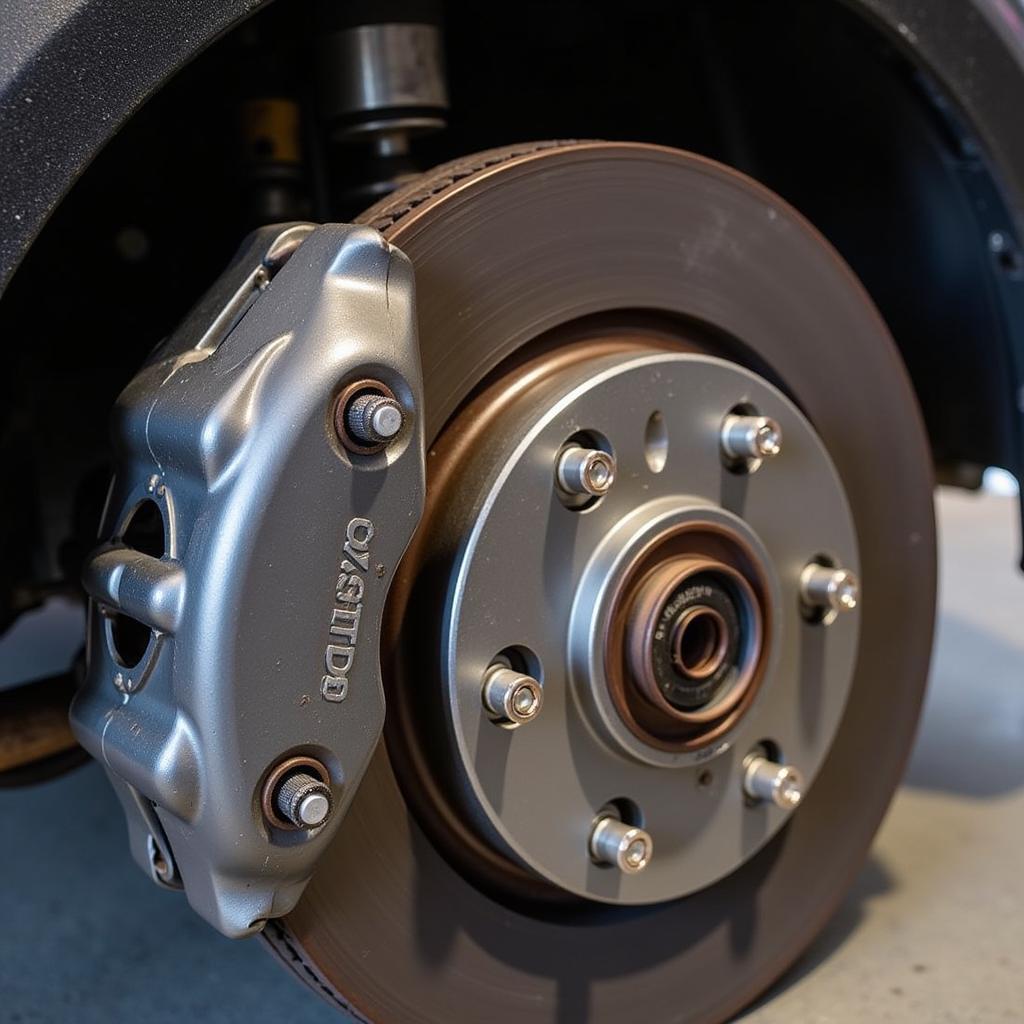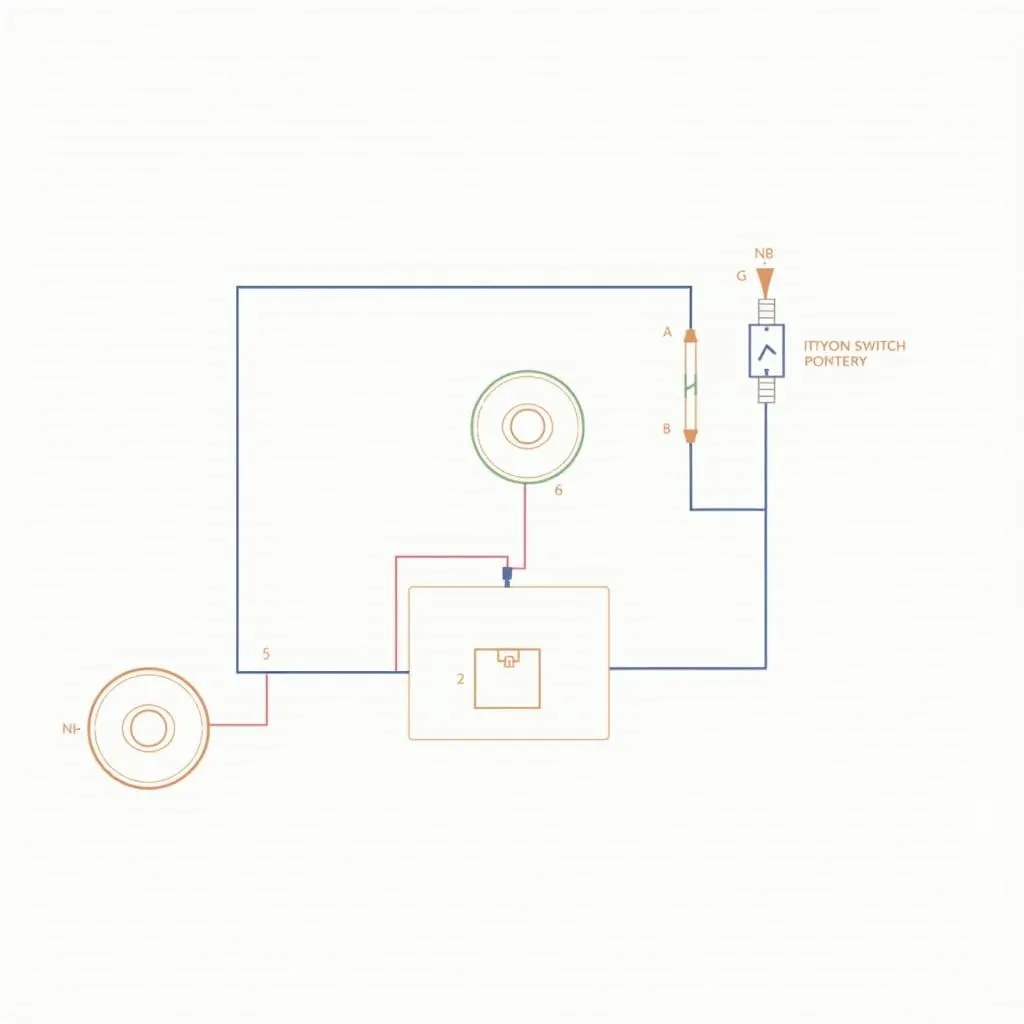Understanding your car radio wiring color code is crucial for any car audio enthusiast, whether you’re installing a new stereo, troubleshooting a faulty connection, or adding aftermarket accessories. This guide provides a comprehensive look into the world of car radio wiring, offering a detailed color wire guide to help you navigate the often-complex web of wires behind your dashboard.
 Car Radio Wiring Color Codes Diagram
Car Radio Wiring Color Codes Diagram
Navigating the maze of wires behind your car’s dashboard can be daunting. But with a little knowledge and the right car radio wiring color wire guide, you can confidently tackle any car audio project. This guide aims to equip you with the necessary information to understand and utilize car radio wiring color codes effectively. If you’re considering adding Bluetooth to your current setup, check out how do you connect bluetooth to your car radio.
Understanding Car Radio Wiring Basics
Before diving into the color codes, let’s establish a basic understanding of car radio wiring. Your car’s electrical system operates on a 12-volt DC system, meaning there are positive and negative wires. The positive wire, often red, supplies power, while the negative wire, typically black, provides the ground. Other wires carry signals for speakers, illumination, and antenna control. Understanding these fundamental principles is key to interpreting the car radio wiring color wire guide.
Standard Car Radio Wiring Color Codes
While there are some standard color codes, variations can exist between car manufacturers and models. Always consult your vehicle’s specific wiring diagram for the most accurate information. However, the following colors are commonly used:
- Red: Constant 12V power supply (even when the ignition is off)
- Yellow: 12V power supply switched with the ignition
- Black: Ground
- Blue: Power antenna control
- Orange: Illumination (dims with dashboard lights)
- Green: Right front speaker positive (+)
- Green with black stripe: Right front speaker negative (-)
- White: Left front speaker positive (+)
- White with black stripe: Left front speaker negative (-)
- Purple: Right rear speaker positive (+)
- Purple with black stripe: Right rear speaker negative (-)
- Grey: Left rear speaker positive (+)
- Grey with black stripe: Left rear speaker negative (-)
“Always double-check the wiring diagram for your specific car model,” advises John Smith, a seasoned automotive electrician with over 20 years of experience. “Using a wiring harness can simplify the installation process and minimize the risk of damage.”
Troubleshooting Common Wiring Issues
Sometimes, even with the correct car radio wiring color wire guide, issues can arise. Here are some common problems and solutions:
- No Power: Check the fuses related to the car radio circuit. Ensure the red and yellow wires are connected correctly.
- No Sound: Verify the speaker wire connections, ensuring positive and negative wires are not crossed. Check the speaker impedance.
- Radio Turns Off with Ignition: The yellow and red wires might be swapped.
- Dim or No Illumination: Check the orange wire connection.
You might be interested in integrating an Amazon Echo into your car. Check out can you pair a car echo to a bluetooth radio for more information.
Tips for Working with Car Radio Wiring
- Disconnect the battery’s negative terminal: This crucial step prevents accidental shorts and protects your car’s electrical system.
- Use a wiring harness: A wiring harness simplifies the installation process and reduces the risk of damaging your car’s wiring.
- Solder and heat shrink connections: Soldering provides a secure and reliable connection, while heat shrink tubing protects the exposed wires.
- Organize your wiring: Neat and organized wiring makes troubleshooting easier and prevents future problems. Consider using zip ties or wire looms.
Want to upgrade your car’s audio system with a Bluetooth radio? Check out bluetooth car radio adapter target for some great options. Or, if you’re looking for a more general overview of Bluetooth options for your car, take a look at bluetooth for your car radio.
“A well-organized wiring job not only looks professional but also simplifies future repairs or upgrades,” adds Jane Doe, a certified car audio installer and trainer. “Taking the time to do it right the first time pays off in the long run.”
Conclusion
Mastering the car radio wiring color wire guide is essential for anyone working on car audio systems. By understanding the basic principles and following the color codes, you can confidently install, troubleshoot, and upgrade your car’s audio system. Remember to always consult your vehicle’s specific wiring diagram for accurate information and ensure a safe and successful installation. Looking to enhance your car audio experience with Amazon Alexa? Check out amazon bluetooth radio car alexa for options and information.
FAQ
-
What does the constant 12V power wire do? This wire provides power to the radio’s memory, preserving settings even when the ignition is off.
-
Why is grounding important? Grounding completes the electrical circuit, allowing current to flow and the radio to function.
-
Can I use any wire for car audio? No, it’s crucial to use automotive-grade wire designed to handle the demands of a car’s electrical system.
-
What is a wiring harness? A wiring harness is a pre-assembled set of wires designed to connect your car radio to the vehicle’s electrical system.
-
What should I do if I’m unsure about the wiring? Consult a professional car audio installer to avoid potential damage to your car’s electrical system.
-
What if my car’s wiring colors don’t match the standard codes? Always refer to your vehicle’s specific wiring diagram for the correct color codes.
-
How can I test the speaker connections? Use a multimeter to check for continuity and resistance between the speaker wires and the speaker itself.



